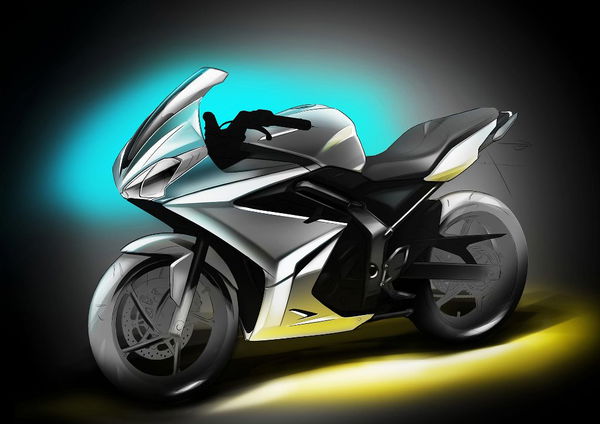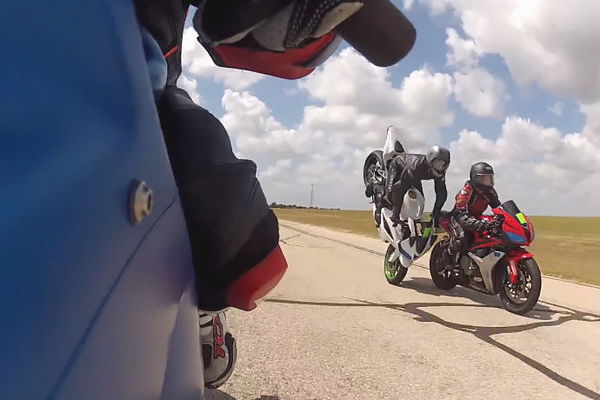Lunchtime debate: Triumph averted disaster by canning those 250s
Visordown’s anonymous industry expert thinks much-spied mini-Daytona and ‘Street Single’ were outdated before their launch


LET’S get one thing straight: a huge amount of respect is due to Triumph and owner John Bloor for what they have done with a marque that would otherwise be a rose-tinted memory.
I’m often surprised by the way the firm manages to launch bikes that, while not making an immediate ‘wow’, turn out to be real-world heroes and long-term sales successes. The Street Triple and Daytona 675 are wonderful things, and even though it’s getting on a bit the Speed Triple remains something of a motorcycle MILF. The Bonnie certainly manages to hit a sweet spot in the retro market that others fail to reach, and sales figures show that the various Tigers are pretty much the only realistic alternative to a certain Bavarian brand when adventure bike buyers go shopping. Even the Sprint GT, which the most generous fan would have to admit is largely assembled from a collection of old bits and pieces, is pretty much impossible to beat if you want a decent sports tourer without spending a fortune.
But there have been misfires along the way too, even if they tend to be hidden from sight – witness the fabled, supposedly-200mph-capable ‘A13HC’ that was caught in a handful of spy shots a decade or so ago. It represented a massive investment, being entirely new from the ground up, including its bespoke 1300cc four-cylinder engine. But the project was dropped shortly before production was due to begin. Other mis-steps included the TT600 and Speed Four, as well as the later Daytona 600: bikes that took on the dominant Japanese brand head-on and, to be fair, didn’t make much of a dent…
The lesson, if there’s one to be taken, appears to be that Triumph’s greatest strengths show up when the firm takes a slightly different tangent. The Daytona 675 is the perfect example. Where the four-cylinder TT600 was simply seen as a sub-par alternative to a CBR600, by creating a triple in the same section of the market Triumph made a bike with a unique appeal that’s since been the inspiration for the MV F3 and should probably take some credit for Yamaha’s decision to take the three-cylinder route for the MT-09.
Which brings me, albeit long-windedly, to the crux of my concern: The Daytona 250 and the naked bike – perhaps called the ‘Street Single’ – that were spun off the same platform. As a recap, these bikes had been confirmed by Triumph, with a sketch of the Daytona. Spy shots revealed they were singles, with simple steel frames and bargain-basement suspension parts.
The Indian-built models were due to be officially unveiled this autumn for production next spring. But at the eleventh hour, Triumph has announced this will not, after all, be happening, because the 250 project has been canned for ‘strategic reasons’.
So what might those strategic reasons have been? After all, there’s a market for small, cheap bikes. The probable answer is that, in a fast-evolving market, they simply weren’t good enough.
Triumph’s real rivals in this segment – in Europe at least – are the likes of Honda’s CBR300R, Kawasaki’s Ninja 300 and the soon-to-be-launched Yamaha R3. Two of those are parallel twins and the other, well, it’s a Honda, which means it’s already a default choice for many. And you’ll note that all of them have recently switched to 300cc, while all talk of the Triumph still refers to it as a 250. They’ve all improved in style and quality recently, too, moving the goalposts for Triumph’s project.
What about the markets in places like India, where the Triumphs will be made and where sales are far higher then Europe could even dream of? The fact is that over there the market is evolving fast. Check out Bajaj’s forthcoming KTM-engined 200SS and 400SS sports bikes and the naked ‘CS’ derivatives. They’re starting to look like serious machines. And the stuff that firms like Hero (massively funded and with Erik Buell helping on the development) and TVS (now tied in with BMW) are promising in the near future must also be daunting for Triumph, which has already turned down offers to tie-in with existing firms in favour of going it alone in India.
The possible rewards if Triumph makes its 250cc venture a success are enormous. It stands to be in a position not only to do well financially but to become a behemoth of a motorcycle maker, turning out unthinkably huge numbers of bikes. And we can be sure that nobody working there has underestimated the challenge they face, even for a moment.
But if the Daytona 250 and Street Single had used the components shown on the prototypes that have been spied already, they would have become this decade’s equivalent of the TT600.
With nothing to mark them out, and basic parts like the square-section swing-arm, there would have been no ‘Daytona 675 trick’ here. Instead they risked being passed over for alternatives that are either cheaper (as bikes like Heros and TVSes are likely to be) or more established (like Honda).
In the past Triumph has redesigned bikes to surpass the competition while still in development – the Tiger Explorer, for example, was heavily modified shortly before its launch.
Not, it seems, this time.
In terms of investment this must have been a massive deal for Triumph. Going so far as to call it ‘make or break’ wouldn't be sensationalist. Axing the project at this stage will have hurt – but going ahead could have been far worse.











